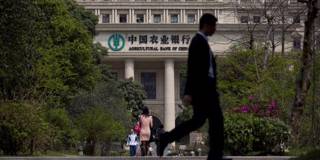At the recent meeting of G-20 finance ministers in Shanghai, many expressed concern about China's chances of reversing its economic downturn. If recent research debunking the so-called middle-income trap is correct, and China maintains the momentum of its structural transformation, such fears may turn out not to be warranted.
LONDON – “What if this is ‘as good as it gets’?” Jack Nicholson asks, as he walks through his psychiatrist’s waiting room in the eponymous film. At the recent meeting of G-20 finance ministers in Shanghai, participants were asking much the same question – and not just with regard to medium-term expectations of weak global growth. Many are now wondering whether China’s current growth rate will be as good as it gets for a long time to come.

LONDON – “What if this is ‘as good as it gets’?” Jack Nicholson asks, as he walks through his psychiatrist’s waiting room in the eponymous film. At the recent meeting of G-20 finance ministers in Shanghai, participants were asking much the same question – and not just with regard to medium-term expectations of weak global growth. Many are now wondering whether China’s current growth rate will be as good as it gets for a long time to come.